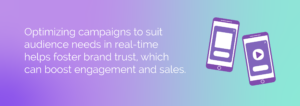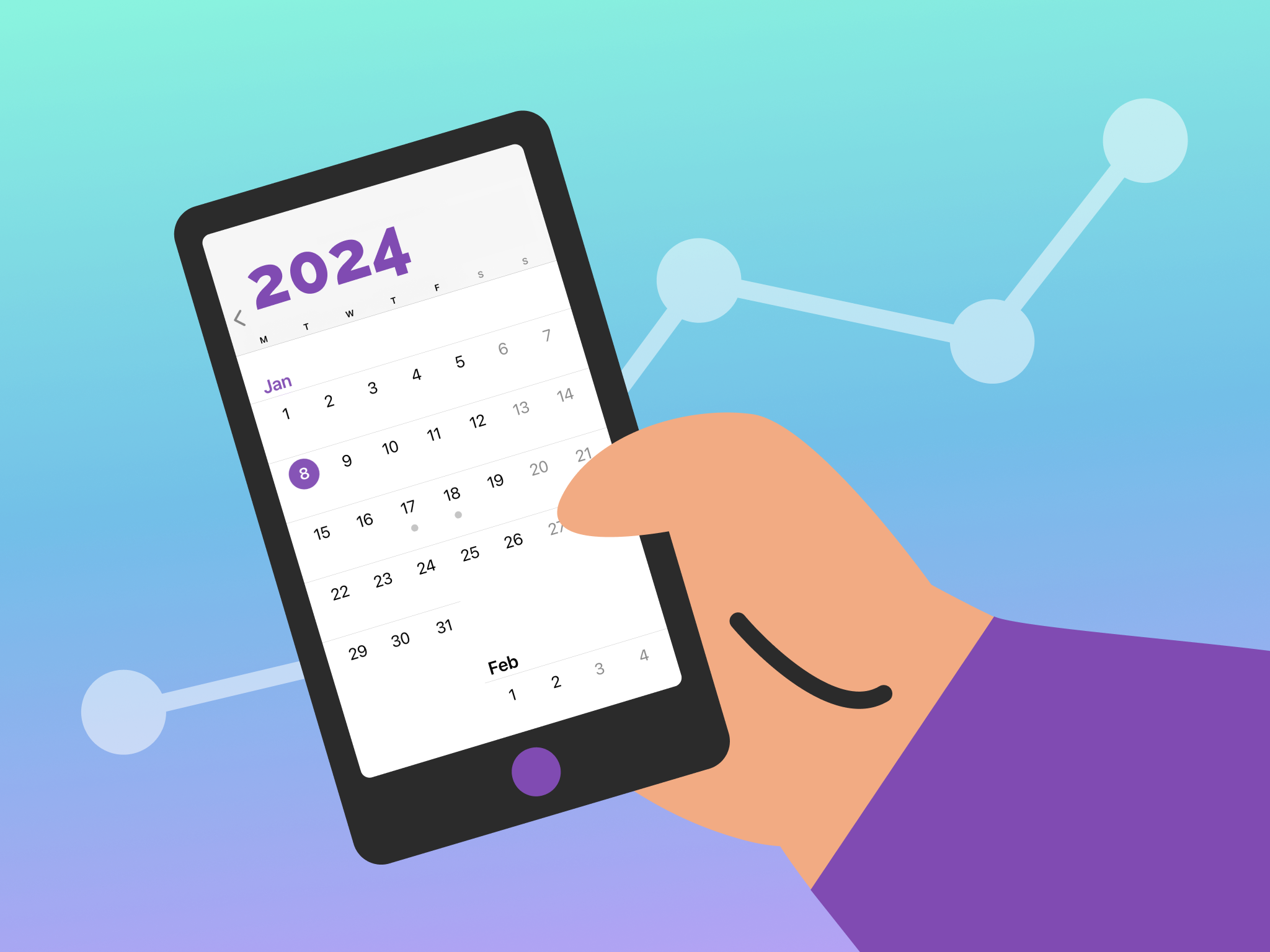In the post-pandemic world, newsprint continues to decline, cable cord-cutting continues to rise, and while email deliverability and open/click-through rates remain steady–at least anecdotally–they were already near historic lows before the pandemic. So how can arts marketers improve their digital marketing strategy to acquire, engage, and grow their audiences now?
Social media platforms and digital advertising are two obvious ways, but as the world of digital marketing evolves, channels that worked in the past might not necessarily work now.
To stay ahead of ever-changing trends, arts marketers can now–more than ever– harness new and innovative strategies and tech to support their advertising efforts and ensure they continue reaching the right audiences with efficient and effective campaigns.
One of the most powerful but underused tools for arts marketing is programmatic advertising — or the automatic buying and selling of digital ad space using real-time bidding. This article will highlight five of its biggest advantages for arts marketers.
Understanding Programmatic Advertising in Arts Marketing
Programmatic advertising is a powerful tool for optimizing the ad-buying process for arts marketers. Grapeseed Media’s arts and non-arts clients now prioritize programmatic campaign elements over more traditional analog channels like direct mail, print, and terrestrial radio.
This is in contrast to five or more years ago, when banners would display around the timing of other campaign elements. Now the conversation has shifted to when other elements—such as local print advertising or direct mail—land in relation to when the core programmatic campaign begins or changes.
This development is fascinating for a few reasons—one of them being that programmatic advertising isn’t the most cost-effective advertising solution. It’s important to note that while it remains the most affordable way to target and convert new audiences, it’s still more expensive than retargeting and converting known or familiar audiences. So the aim is to strike a balance between volume and efficiency. To calculate the efficiency of programmatic ads, arts marketers are comparing their cost-per-new-acquisition from five years ago with the current CPA for their programmatic ad campaigns.
With that in mind, let’s take a look at five reasons savvy arts marketers are flocking to programmatic advertising.
1. Hyper-Targeted Marketing Campaigns
Programmatic advertising allows for hyper-targeted campaigns that are created using specific user demographics, including the target consumer’s age, location, career, and interests. In the case of arts marketers, the target audience is people interested in–you guessed it–the arts.
For example, Berkeley Rep leveraged Grapeseed Media’s programmatic advertising to drive single-ticket sales back beyondpre-pandemic levels. These campaigns deployed a number of strategies including:
- Serving real-time ads to users actively considering theater tickets in the area
- Using keyword targeting to serve ads related to the artists and themes of the production
- Using mobile footprinting technology to identify visitors to other theaters in the San Francisco area
- Retargeting website visitors across all their apps and devices.
This targeted approach enables marketers to launch highly effective ad campaigns that generate the maximum return on ad spend (ROAS). Berkeley Rep’s goal was a 400% ROAS, but with Grapeseed’s help, it managed to achieve a 1,244% ROAS for its production of Dana H by Lucas Hnath.
While Dana H was a well received production and Berkeley Rep’s reputation is quite good, this was not an isolated campaign. Over the course of a year and as of the date of this article, these campaigns are continuing to meet or exceed “pre-Covid” KPIs like Return On Ad Spend (ROAS).

Programmatic advertising is particularly effective for arts marketing because the target audience tends to be a very specific niche. Therefore, a data-driven, targeted, programmatic approach can help your message reach the right people in a way that’s just not possible with conventional display advertising.
2. Delivering the Right Message at the Right Time
Because programmatic marketing runs on algorithms, you can use it to deliver your ads to the right audience at the right time. Timing is everything for arts organizations: seat inventory expires, shows and exhibits close, and different arts buyers are on different timelines — especially in the post-pandemic era.
The McKittrick Hotel in New York achieved a 685% ROAS on its new show, The Woman in Black, with help from Grapeseed Media. One of the strategies used in this campaign was to serve audio and CTV (Connected TV–a channel arts organizations are increasingly seeing as a kind of alternative to what might have been a traditional local cable TV campaign five years ago) ads to new users, then retarget the ones who listened to or watched these top-of-funnel ads with sales-driving display and social media marketing ads over the following two weeks.
This approach helped ensure the ads were both relevant and timely to the target audience since they had already shown interest in the production. It also created a full-funnel marketing campaign that resulted in a click-through rate (CTR) that was 53% higher than the target.
Of course, this is just one example of how programmatic can deliver the right message at the right time. Other ways to do this include retargeting customers who have already visited your site with a discount or special offer on the product or event they were looking at.
You can also use audience profiling to build an ideal customer profile and target customers based on shared interests, attributes, and behavior. For instance, Grapeseed helped the McKittrick Hotel leverage purchaser lists from productions of The Woman in Black in other cities to build their customer persona for the production.
Another component of this right message and right time campaign strategy is the diversity of impressions offered; traditional banner (even animated) campaigns ultimately serve visual-only ads through a computer or mobile device screen. Add in video, audio, and CTV impressions and the prospective arts-goer begins to see/hear and absorb the impressions more consciously and encourage the all-important “purchase decision.” That brings us to the next reason…
3. Effective Ad Placement for Arts Marketers
With programmatic advertising, the algorithm determines the most effective ad placement for each individual user, with the goal of driving the greatest possible impact.
For example, if the algorithm determines that the most effective placement of the ad is on Instagram, that’s where it will place them. If, on the other hand, it decides that the most effective use of the campaign funds is to direct the ad to a more specialized website with a high concentration of targeted users, that’s what it will do.
This is good news for arts marketers, whose audiences may “hang out” in different places around the internet. For instance, YouTube may be the best place for ads relating to a musician’s latest release, Instagram may be better for a digital artist promoting their NFT collection, and the Goodreads website might be more effective for a novelist’s latest offering. These are, of course, obvious channels to advertise these particular “products” and they’re simple examples of how programmatic advertising is indeed a “program:” trying various strategies and tactics (and channels) to get to the most efficient and effective campaign over time.
Programmatic algorithms figure out which placement will get the ad in front of the most relevant audience’s eyes. They also target users across all their devices, whether that’s a video ad on a mobile phone or a display ad on a tablet, all of which helps maximize the effectiveness of the ad campaign.
4. Expanded Reach
Programmatic advertising gives you the power to reach the most relevant target audience, no matter where they’re based in the world. It also gives you access to data management platforms (DMPs), which provide thousands of audiences to choose from. While display and paid social ads remain valuable, if you’re not using programmatic, you’re missing out on getting your ads in front of more of the right people. Grapeseed Media often achieves the best results for arts organizations when they have “maxed out” or hit significantly diminishing returns on single channels like paid social, paid search, or a single display network like Google.
With programmatic ads, you buy audiences rather than placements, meaning the ad can be placed anywhere on the internet, depending on what the algorithm decides is most effective. Since audiences are sourced from reputable publishers such as Forbes, you can be sure your ad will be exposed to the right audience.
Programmatic advertising is not limited to one specific site, network, or type of ad, giving marketers the ability to reach a large number of people with their ad campaigns — which is particularly useful if you want to reach a global audience.

5. Real-time Campaign Updating and Optimization
In a traditional marketing campaign, the analysis and optimization are done after the campaign ends. By contrast, programmatic ad campaigns are updated and optimized in real-time. This allows you to see the campaign performance while it’s still running and make any adjustments to improve performance as necessary.
By measuring metrics such as impressions (the number of people who see your ads), engagement, CTRs, cost-per-click (CPC), and ROAS, you can see how well your campaign is performing and optimize it by adjusting the target audience or focusing on the best-performing platforms or devices.
Furthermore, optimizing campaigns to suit audience needs in real-time helps foster brand trust, which can boost engagement and sales. At Grapeseed, this human element is a core feature of how we work — we don’t just give you access to the latest adtech, we also have a team of experts overseeing the optimization of every campaign.
Promote Your Arts Business with Programmatic Advertising
We are, fortunately, long beyond the days of convincing arts organizations that digital advertising techniques are a critical part of a campaign. The current challenge facing arts marketers is how to center programmatic advertising in the midst of decreasing efficacy in what had been “still working” analog methods in years passed.
Programmatic advertising, with its ability to deliver hyper-targeted, highly effective ad campaigns, is one of the most powerful tools an arts marketer can employ — whether you’re an individual artist, an organization, or an agency.
Many art promoters opt to partner with programmatic specialists like Grapeseed Media to deliver expertly crafted, fully optimized campaigns that help them grow their brands and drive more sales. Get in touch with the Grapeseed team to learn more about how we can help you grow your arts business.







